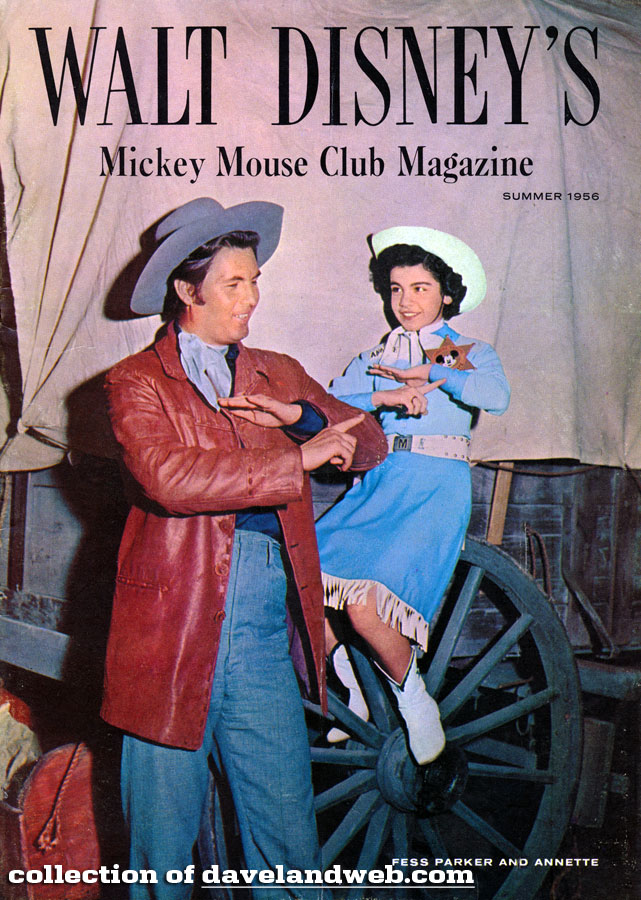
More vintage Frontierland for my readers today, as I share an article called "New Frontiers at Disneyland: One of the Mouseketeers tries out the new rides at the Magic Kingdom." This was written by Mouseketeer Bobby Burgess for the Summer 1956 issue of the Mickey Mouse Club Magazine. Besides the vintage illustrations that were featured in the magazine, I'll be sprinkling a few appropriate photos from my collection to flesh out Bobby's breathless tale of adventure:
It's nice to live in Los Angeles. You get to go to Disneyland! I've been there quite a few times since the Park opened last summer. Lately, the people at the studio in Burbank have been talking about how a lot of new rides have been put into Disneyland because it's the first birthday for the Park, and it's the first time it will be open for a whole summer. This I had to see! I got hold of a couple fellows I know and we went down there early one Saturday morning.
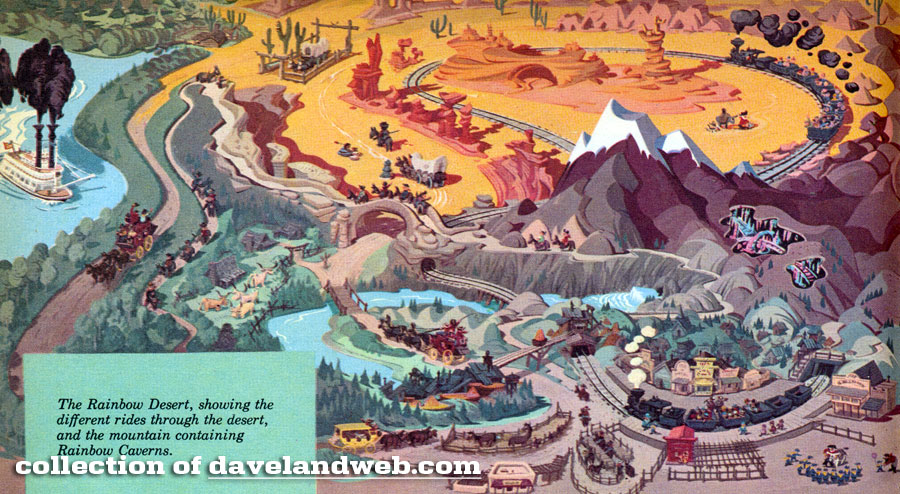
First, we headed straight for Frontierland. I wanted to ride the new mine train. So we stopped at the Rainbow Mining & Exploration Company, in a little mining town built right against a mountain called Rainbow Mountain.
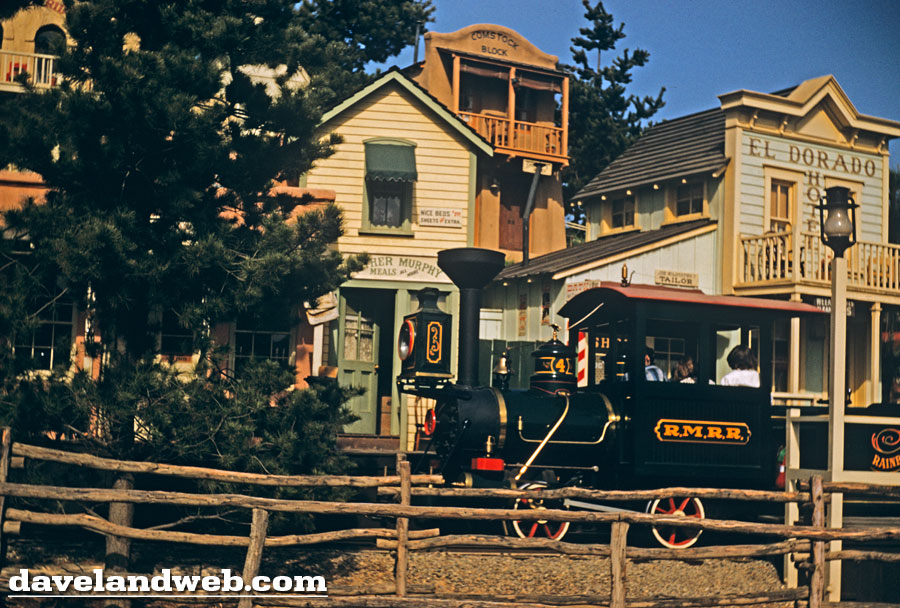
There's an old-fashioned, scale-size steam locomotive that pulls a string of regular little mine cars. We rode the mine cars through a tunnel and out across Rainbow Desert. We could see all kinds of crazy rock formations in the desert, like Coyote Rock and Inscription Rock and the Balancing Rocks.
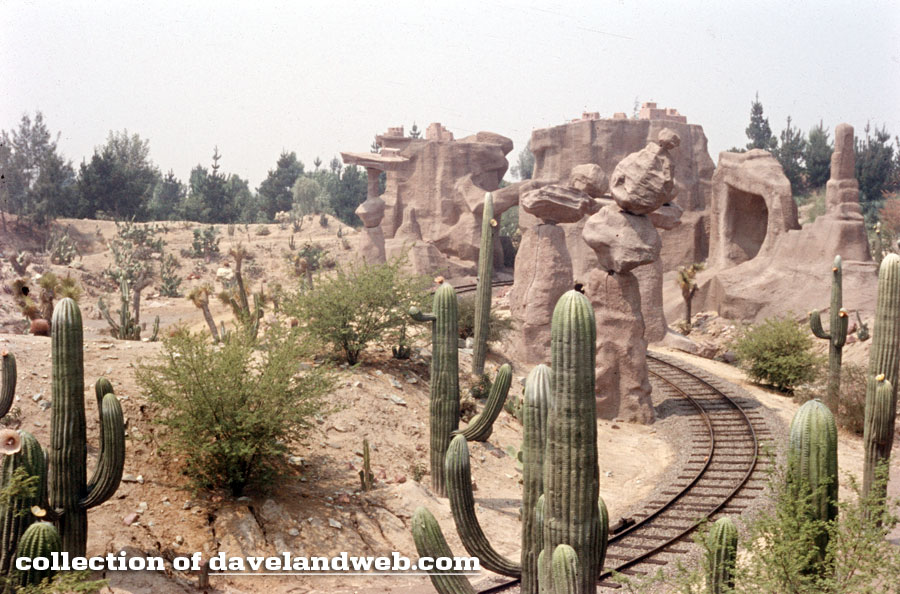
When we went by the Balancing Rocks the engineer of the locomotive blew his whistle and the rocks jiggled around from the sound.
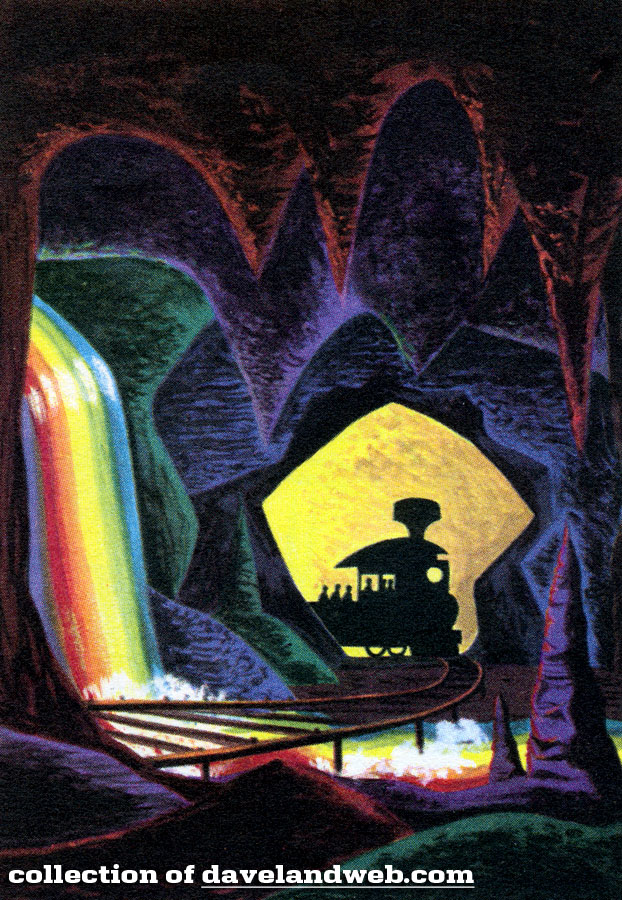
And then the train went into a pitch-black tunnel right in the side of the Rainbow Mountain, and there we were in the Rainbow Caverns. At first we couldn't see a thing, it was so dark. We came to a place where it was half-light, and you could see the walls of the cave with a lot of creepy looking rocks there. Then we got to the waterfalls which were many different colors. And they glowed in the dark. There was Bridal Veil Falls that looked just like a bride's veil, only golden. And Red Devil Falls was red, natch, and like a devil. The scariest was something called the Witch's Cauldron. This had red water falling down over the rocks in the form of an old witch. The water dropped into a big pot-type thing and then bubbled out. There was a falls called Dance of the Seven Sisters. It looked like seven women and when you watched them, they seemed to dance.
There were lots more falls, and some geysers, too. All of a sudden the train went round a bend in the cave, and we were back out in the sunshine, at the mining town.
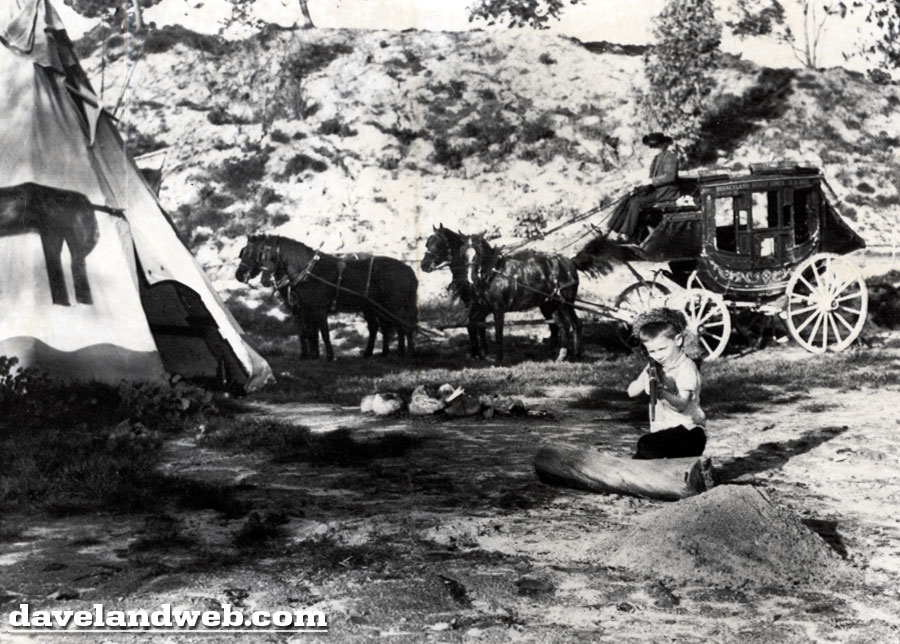
The fellows I was with got the Stage Coach then. They wanted a second look at that Rainbow Desert. And I took the Mule Pack Ride to see the 20,000 year old dinosaur tracks near the trail.
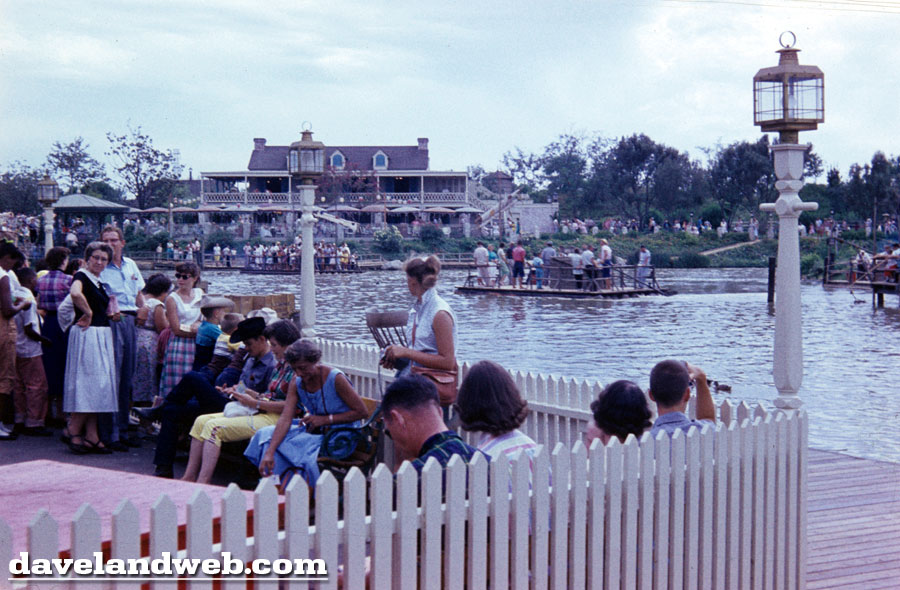
We all met over near the Chicken Plantation, where we could get a Huck Finn Raft to Tom Sawyer Island.
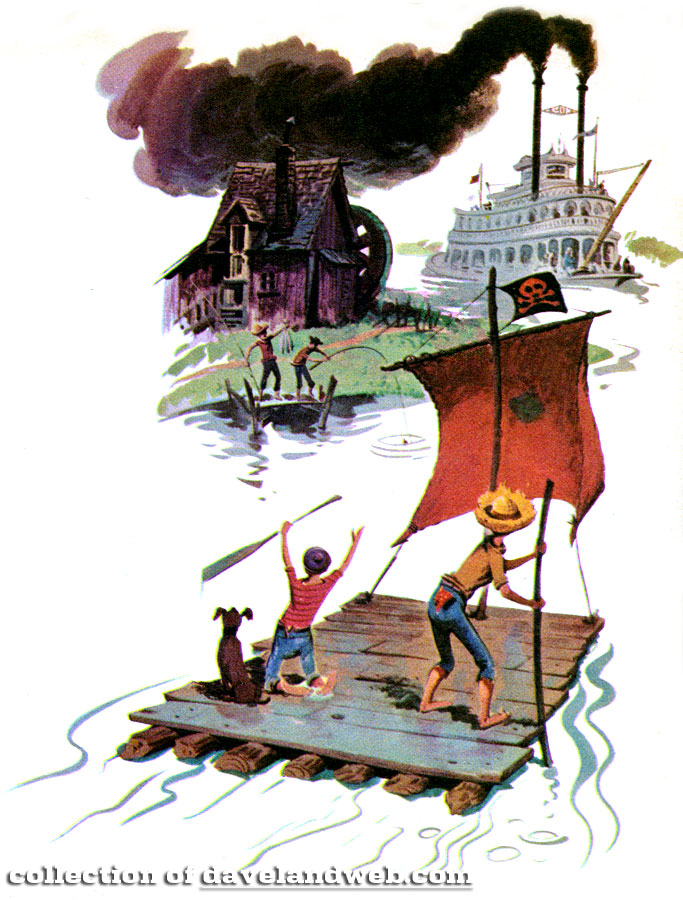
Every other time I've been to Disneyland no one could get on the Island, but now you can cross over on the rafts.
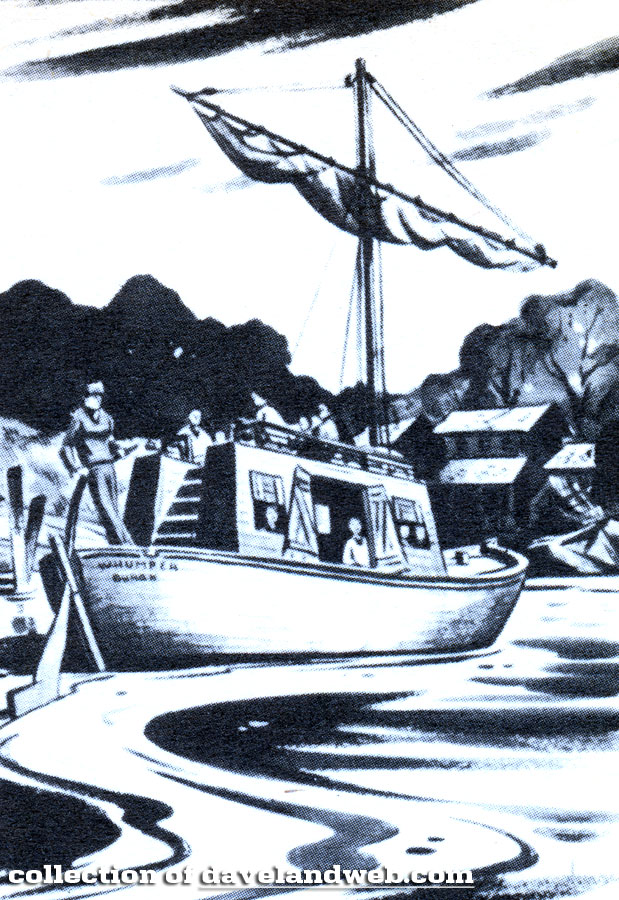
Matter of fact, the river is pretty busy, what with the Mark Twain making its regular trip, the Indian War Canoes, the Mike Fink Keelboats, and the rafts.
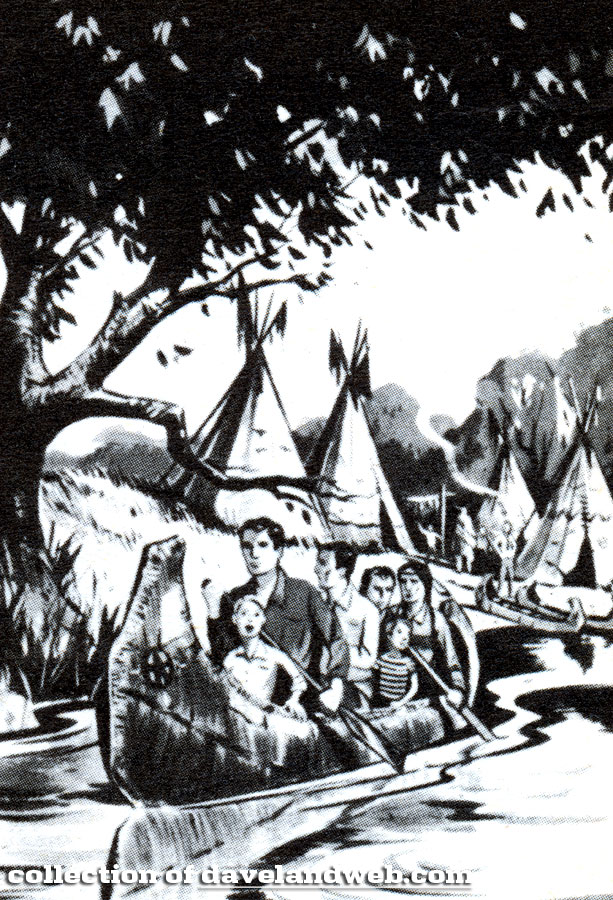
On the Island, we went through Fort Wilderness first. That's a real log fort with a sort of catwalk on top of the inside walls.
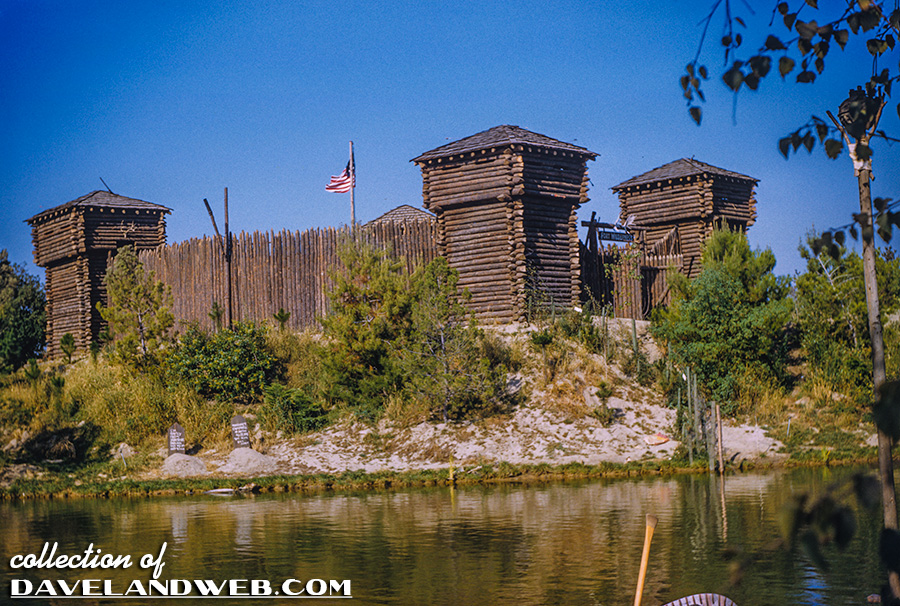
You can look out from it and see an Indian camp. And there are elk and deer and moose and cougar in the brush. At one end of the Island there's a settler's cabin that's burning like crazy.
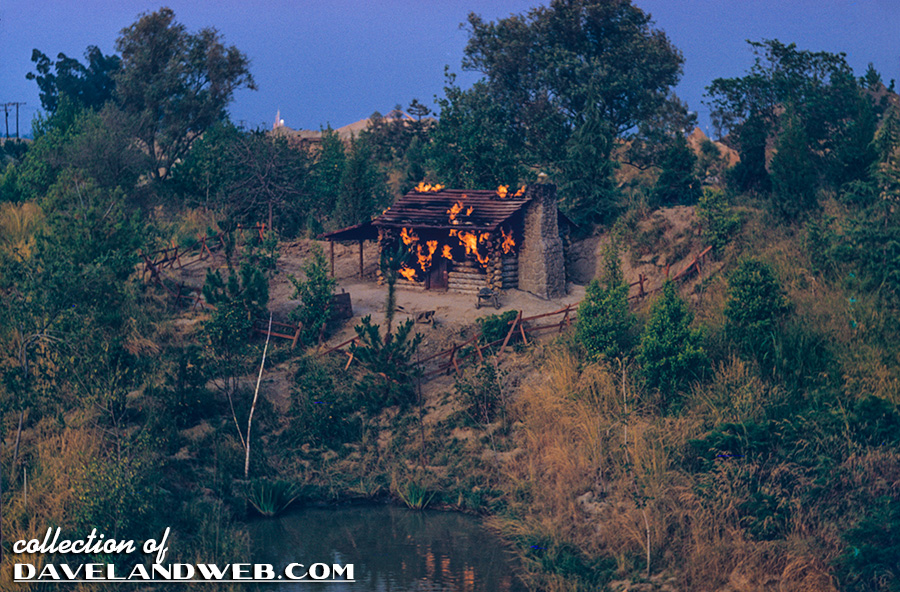
A guide told us it was the settler's cabin that's burning like crazy. A guide told us it was the settler's own fault. He had double-crossed the Indians, so they burned his cabin.
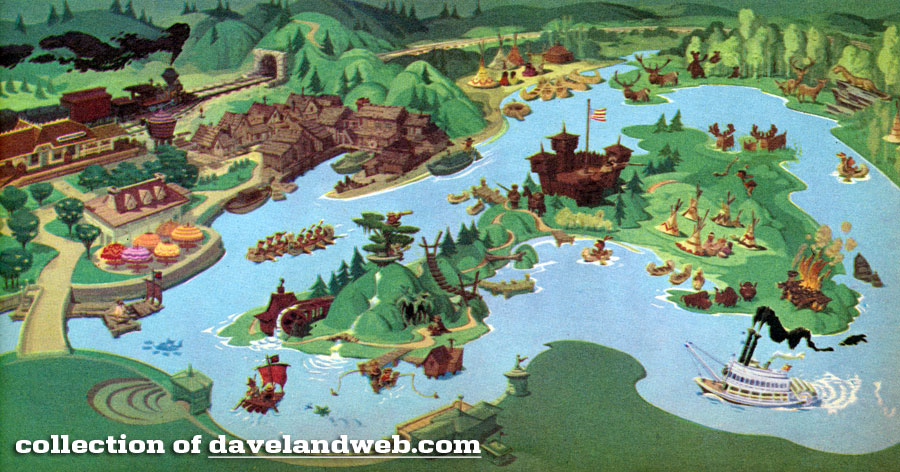
Down near Lookout Mountain, across a suspension bridge that sways when you walk on it, is Injun Joe's Cave.
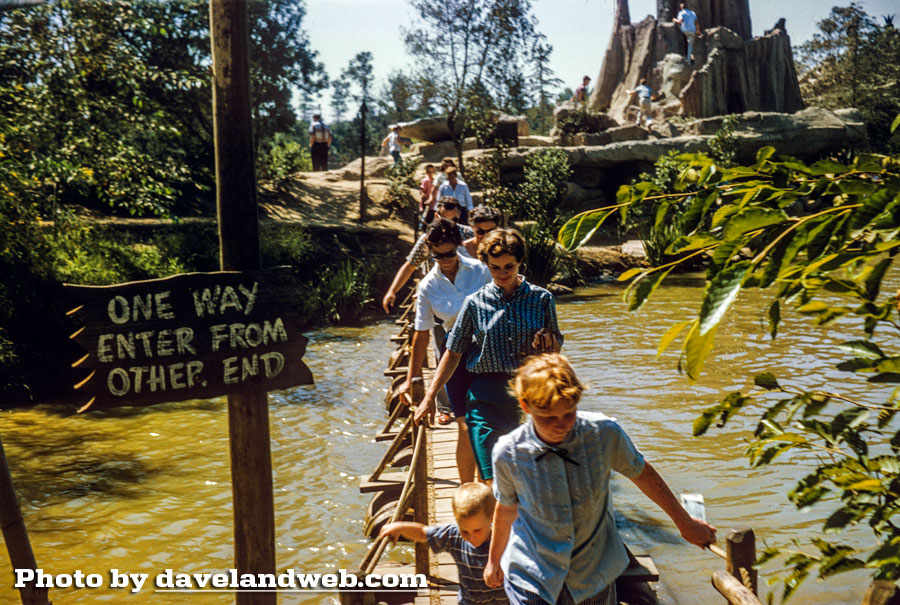
It looks just as you'd imagine it from reading Tom Sawyer—with stalactites (those are the things that hang down from the roofs of caves) and stalagmites (they grow up from the floors of caves) and a bottomless pit. When you come near the bottomless pit, you feel cold air blowing at you from out of the pit.
A few interesting things to note in the article; all of the illustrations were artistic renderings. No photos. This is definitely understandable with Rainbow Caverns, which is probably one of the least photographed areas of the park (due to the lighting conditions and the limitation of photography at the time). It was somewhat obvious that the article was meant to push the recently opened Tom Sawyer Island and the many modes of transportation that took people across the river. Just the other day, one of my readers was asking about where the rafts were boarding, and this article answers his question: right near the Chicken Plantation, which is where New Orleans Square now stands. This article also gives the "back story" for the Burning Cabin. To be more politically correct, the Indians were eventually removed in later years when the narration on the Mark Twain addressed the Burning Cabin.
See more vintage & current Disneyland Frontierland attraction photos on my Frontierland web page.

4 comments:
I love the part of the article which mentions the river is pretty busy, what with the Mark Twain, Canoes, Keelboats and Rafts. Shortly after, the Columbia would be added making the river even busier.
The illustrations are cool. I especially like the illustration of the Mine Train inside Rainbow Caverns. The B&W photo of the stagecoach, teepee and the Davy Crockett kid with his rifle is an unusual shot. Very Nice.
Those illustrations are so beautiful!!! I want a whole wall painted with a Frontierland mural!
I love the artwork, especially that first Living Desert one! Any idea who the artist was?
Hannah - Unfortunately, I didn't see any credit on those pages of the magazine. Wish I knew - yes, it is very beautiful!
Post a Comment